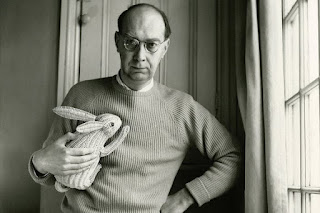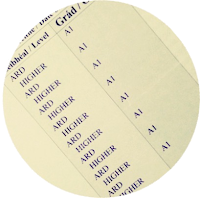The 2014 Leaving Cert English Higher Level Paper asked this question:
“Larkin is a perceptive observer of the realities of ordinary life in poems that are sometimes illuminated by images of lyrical beauty.”
[Note: Lyrical – expressing the writer’s emotions in an imaginative and beautiful way.]
As the poem progresses, we learn that less than twenty years ago, “two dozen distances sufficed to fable” these champion racehorses. They were the main attraction of “faded, classic Junes” when “numbers and parasols” littered the British Ascots, and “squadrons of empty cars” littered the surrounding roads to see these horses run. Larkin creates lively, colourful images, which are in stark contrast the peace and laziness of the horses in the first stanza. The changing imagery creates an almost cinematic flashback, allowing me to easily identify the significant changes that these horses have undergone.
The fourth stanza reverts to gentle, relaxed imagery that mirrors the first stanza. Larkin questions if the horses miss the fame and attention that they were subject to just twenty years previous? Do they long to return to the activity and noise? Larkin thinks not:
“Do memories plague their ears like flies?
They shake their heads.”
‘At Grass’ delivers a complex but imperative message about time that I feel resonates as clearly today as it did when Larkin first composed it. Larkin reminds his readers to accept the change that time brings; glory days will come and pass quickly. Through his use of common imagery and language, Larkin poses complex questions in an eloquent and intriguing manner.
In the two stanzas that follow, Larkin creates a holiday atmosphere of the world that they are leaving behind, a peaceful image of “children at play”, “adverts for cocoa” and “the pubs / Wide open all day”, while , the “countryside”isn’t “caring”. The war is so far removed from the country that they are barely aware of it taking place. This was the time of“differently-dressed servants”, who were confined to “tiny rooms in huge houses”. The images created by Larkin here highlight the extent to which this world has vanished. The currency has passed into history, the names of the children, the distinct class structures have been utterly transformed, and, as Larkin points out, transformed at an even greater pace because of WWI.
The speaker repeats this message in the final stanza. “Never such innocence” will exist anywhere again, as we are now aware of the monumental destruction that accompanies war. Larkin effectively uses the Great War, an international travesty, to relate to a large audience. This commentary would have easily manifested into the minds of all British families as virtually every village, town and family lost a their loved ones to the war. Larkin uses stunning images to capture the beauty of Britain and the grave changes that 1914 ultimately brought.

This grave has been made famous for the “sharp tender shock” it brings when tourists see the statues holding hands. To “the endless altered people” who visit the tomb, this carving represents eternal love, but it’s clear from his use of language that Larkin is skeptical.
Larkin’s use of the word “lie” creates an ambiguous message in the poem: is the speaker describing how the statues ‘lie’ together or how the idea of endless love that they have made tangible is a ‘lie’ in the minds of the tourists? He suggests that they would never have expected to become advocates for the idea that ‘Love conquers all’.
Larkin uses a wonderful oxymoron to illustrate that nothing can conquer the passage of time. Even “the earl and countess [who] lie in stone”undergo a “stationary voyage” because of the artificial changes tourists have force upon the statue. “Time has transfigured them into/ Untruth”. I believe that Larkin longed for people to understand mortality and accept it as a definitive end. The sharp memorable images makes ‘An Arundel Tomb’ a straightforward but beautifully crafted poem that longs to transform our romanticised view of unyielding everlasting love into something more realistic.
 |
| The Medieval tomb, in Chichester Cathedral of Richard FitzAlan, 10th Earl of Arundel and his 2nd wife Eleanor of Lancaster. The inspiration for Philip Larkin’s poem “An Arundel Tomb” published in 1964. Credit: BBC.co.uk |
Larkin deals with a similar theme of the transience of life in “Ambulances”. This poem is a meditation on the closeness of death, its randomness and its inevitability. These three ideas are captured for Larkin in the action of ambulances in the city. The first stanza describes the physical appearance of the ambulance, which is instantly suggested of the theme of death. The speaker creates an ambiguity around ambulances: they are “closed like confessionals” and give “back/ None of the glances they absorb.” In this way, the ambulance seems very similar to a coffin. Like death, this ambulance can “come to rest at any kerb”. In this short sentence, the arrival of the ambulance is conveyed as random and indiscriminate. The use of colour red in the description of the “stretcher blankets” signifies death and the contrast with “wild white face” may allude to the red and white symbol of the Red Cross. I feel that the point Larkin was trying to stress here is that even in an ordinary place with everyday activities going on around us, death can strike unexpectedly. [Another subtle reference to the question.]
In the third stanza, it becomes clear that the poem centres on a depressing insight into our own mortality. The onlookers, confronted by the image of the white, frightened face of the victim, do not really genuinely sympathise with this person. Instead, they “retreat into their own distress”. There is a realisation that at some stage, they will inevitably become death’s victim. The thought that the ambulance brings the patient “closer what is left to come” is symbolic of the poet’s view that we are always rushing towards death.
Get full notes on Larkin:
More detail about them here
|
Leaving Cert English Sample Essay and Notes
|



